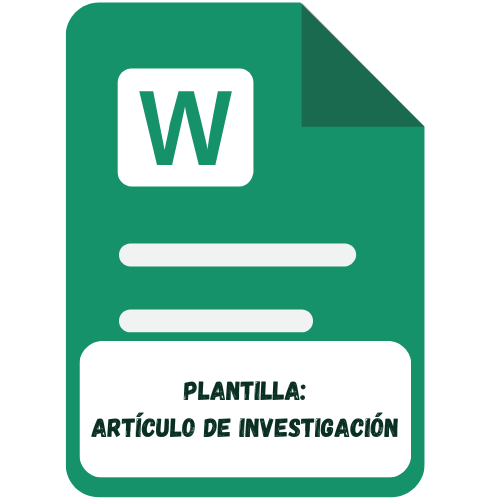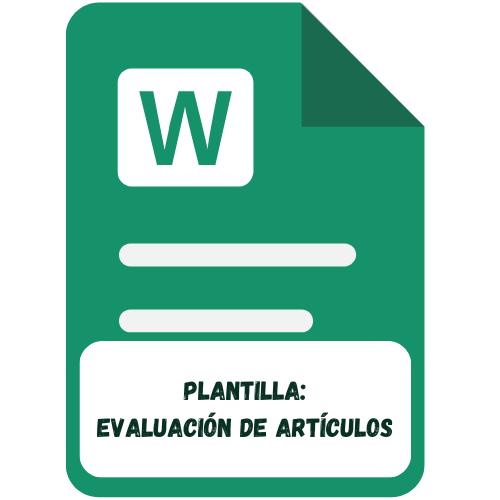Extruido a base de Camote y Uva red globe mediante el diseño de mezclas
DOI:
https://doi.org/10.69507/Palabras clave:
Modelo, Extruidos, Fenoles, Deseabilidad, AntioxidanteResumen
Los objetivos de la investigación fue optimizar los fenoles totales y la capacidad antioxidantes de un producto extruido a base de camote y uva red Globe mediante el diseño de mezclas.
Se utilizo un diseño de mezclas simple centroide considerando como componentes al concentrado de uva, harina de camote y agua, obteniendo nueve formulaciones, las cuales fueron extruidas en un extrusor de tornillo simple (300 RPM). Donde se evaluó el contenido de fenoles totales, y actividad antioxidante frente al radical ABTS y DPPH y con estos resultados se elaboraron los modelos matemáticos, la optimización de las variables respuesta se dio con el propósito de tener mayor contenido de fenoles totales y capacidad antioxidante (frente al radical ABTS y DPPH) en los extruidos.
Se obtuvo mezclas con mayor deseabilidad en el concentrado de uva y de menor deseabilidad en la harina de camote y el agua, así mismo el concentrado de uva tuvo mayor contenido de fenoles totales que la harina de camote, se concluye que la capacidad antioxidante dieron valores elevados para el concentrado de uva en comparación con los valores de capacidad antioxidante obtenidos en la harina de camote y la proporción de ingredientes para la mezcla que me optimizo el contenido de fenoles totales y capacidad antioxidante simultáneamente fue el método de función de deseabilidad.
Descargas
Referencias
Cory H, Passarelli S, Szeto J, Tamez M, Mattei J. (2018). The Role of Polyphenols in Human Health and Food Systems: A Mini-Review. Frontiers in Nutrition, 5(87), 1-9. https://doi.org/10.3389/fnut.2018.00087
Reis S, Rai D, Abu-Ghannam N. (2014). Apple Pomace as a Potential Ingredient for the Development of New Functional Foods. International Journal of Food Science & Technology, 49(7), 1743–1750.
Höglund E, Eliasson L, Oliveira G, Almli VL, Sozer N, Alminger M. (2018). Effect of drying and extrusion processing on physical and nutritional characteristics of bilberry press cake extrudates, LWT; 92, 422–428. https://doi.org/10.1016/j.lwt.2018.02.042
Grasso S. (2020). Extruded snacks from industrial by-products: a review. Trends in Food Science & Technology, 99, 284–294. https://doi.org/10.1016/j.tifs.2020.03.012
Cunniff, P. (1997). Official Methods of analysis of AOAC International. A.O.A.C. International.
Singleton V. L. & Rossi J. A. (1965). Colorimetry of Total Phenolics with Phosphomolybdic-Phosphotungstic Acid Reagents. American Journal of Enology and Viticulture, 16(3), 144-158.
Brand-Williams W., Cuvelier M. E., Berset, C. (1995). Use of a free radical method to evaluate antioxidant activity. LWT - Food Science and Technology, 28(1), 25–30. https://doi.org/10.1016/S0023-6438(95)80008-5
Re, R., Pellegrini, N, Proteggente, A., Pannala, A., Yang, M., Rice-Evans, C. (1999). Antioxidant activity applying an improved ABTS radical cation decolorization assay. Free radical biology and medicine, 26(9): 1231-1237.
Pantelić M.M., Dabić Zagorac, D.Č., Davidović, S. M., Todić S. R., Bešlić, Z. S., Gašić, U. M., Tešić, Ž Lj., Natić, Maja M. et al. Identification and quantification of phenolic compounds in berry skin, pulp, and seeds in 13 grapevine varieties grown in Serbia. Food Chemistry, 211: 243–252. https://doi.org/10.1016/j.foodchem.2016.05.051
Li, F., Li, F., Yang, Y., Yin, R., Ming, J. (2019). Comparison of phenolic profiles and antioxidant activities in skins and pulps of eleven grape cultivars (Vitis vinifera L.). Journal of Integrative Agriculture, 18(5), 1148–1158. https://doi.org/10.1016/S2095-3119(18)62138-0
Cui, R., Zhu, F. (2019). Physicochemical properties and bioactive compounds of different varieties of sweetpotato flour treated with high hydrostatic pressure. Food Chemistry, 299(125129), 1-10. https://doi.org/10.1016/j.foodchem.2019.125129
Maria de Carvalho Tavares, I., Machado de Castilhos, M., Aparecida Mauro, M., Mota Ramos, A, Teodoro de Souza, R., Gómez-Alonso, S., Gomes, E., Da Silva, R., Hermosín-Gutierrez, I. & Lago-Vanzela, E. (2019). BRS Violeta (BRS Rúbea × IAC 1398-21) grape juice powder produced by foam mat drying. Part I: Effect of drying temperature on phenolic compounds and antioxidant activity. Food chemistry, 298(124971), 1-11. https://doi.org/10.1016/j.foodchem.2019.124971
Teow, C. C, Truong, Van-Den, McFeeters, R. F., Thompson, R. L., Pecota, K. V., Yencho, G C. (2007). Antioxidant activities, phenolic and β-carotene contents of sweet potato genotypes with varying flesh colours. Food Chemistry 2007, 103(3), 829–838. https://doi.org/10.1016/j.foodchem.2006.09.033
Méndez M. (2018). Análisis de datos con R: Una aplicación a la investigación de mercados. ESIC Editorial; 2018.
Cruz Rambaud, S., Lorenzana de la Varga, T. & Sánchez Pérez, A. M. (2020). Métodos matemáticos para la valoración de empresas y proyectos de inversión: ejercicios resueltos con Excel. Editorial Universidad de Almería.
Gutiérrez González, E. & Vladimirovna Panteleeva, O. (2016). Estadística Inferencial 1: para ingeniería y ciencias. Grupo Editorial Patria; 2016.
Martínez González, M. A., Sánchez Villegas, A., Toledo Atucha, E. & Faulin Fajardo, J. (2020). Bioestadística Amigable (4ª edición). Elsevier Health Sciences; 2020.
Bisharat, G. I., Lazou, A. E., Panagiotou, N. M., Krokida, M. K. & Maroulis, Z. B. (2015). Antioxidant potential and quality characteristics of vegetable-enriched corn-based extruded snacks. Journal of Food Science and Technology, 52(7), 3986–4000. http://dx.doi.org/10.1007/s13197-014-1519-z
Leyva-Corral, J., Quintero-Ramos, A., Camacho-Dávila, A., Zazueta-Morales, José de Jesús, Aguilar-Palazuelos, E., Ruiz-Gutiérrez, M. G., Melendez-Pizarro, C. & Ruiz-Anchondo, T. de J. (2016). Polyphenolic compound stability and antioxidant capacity of apple pomace in an extruded cereal. LWT - Food Science and Technology, 65, 228–236.
Chalermchaiwat, P., Jangchud, K., Jangchud, A., Charunuch, C., Prinyawiwatkul, W. (2015). Antioxidant activity, free gamma-aminobutyric acid content, selected physical properties and consumer acceptance of germinated brown rice extrudates as affected by extrusion process. LWT - Food Science and Technology, 64(1), 490–496. https://doi.org/10.1016/j.lwt.2015.04.066
Wang, T., He, F., Chen, G. (2014). Improving bioaccessibility and bioavailability of phenolic compounds in cereal grains through processing technologies: A concise review. Journal of Functional Foods, 7, 101–111. https://doi.org/10.1016/j.jff.2014.01.033
Lohani, U. C. & Muthukumarappan, K. (2017). Process optimization for antioxidant enriched sorghum flour and apple pomace based extrudates using liquid CO2 assisted extrusion. LWT, 86, 544–554. https://doi.org/10.1016/j.lwt.2017.08.034
Gui, Y. & Ryu, G. H. (2014). Effects of extrusion cooking on physicochemical properties of white and red ginseng (powder). Journal of Ginseng Research, 38(2), 146–153.
Brennan, C., Brennan, M., Derbyshire E, Tiwari BK. (2011). Effects of extrusion on the polyphenols, vitamins and antioxidant activity of foods. Trends in Food Science & Technology, 22(10), 570–575. https://doi.org/10.1016/j.tifs.2011.05.007
Lohani, U. C. & Muthukumarappan, K. (2016). Effect of Extrusion Processing Parameters on Antioxidant, Textural and Functional Properties of Hydrodynamic Cavitated Corn Flour, Sorghum Flour and Apple Pomace-Based Extrudates. Journal of Food Process Engineering, 40(3), 1-15. https://doi.org/10.1111/jfpe.12424
Jozinović A, Panak Balentić J, Ačkar Đ, Babić J, Pajin B, Miličević B, et al. (2019). Cocoa husk application in the enrichment of extruded snack products. Journal of Food Processing and Preservation; 43(4), 1-9. https://doi.org/10.1111/jfpp.13866
Derringer, G., & Suich, R. (1980). Simultaneous Optimization of Several Response Variables. Journal of Quality Technology, 12(4), 214–219. https://doi.org/10.1080/00224065.1980.11980968
Lazic, Z. R. (2006). Design of experiments in chemical engineering: a practical guide. John Wiley & Sons.
Descargas
Publicado
Número
Sección
Licencia

Esta obra está bajo una licencia internacional Creative Commons Atribución-NoComercial-CompartirIgual 4.0.
Los autores que publican en esta revista aceptan los siguientes términos:
a. Los autores conservan los derechos de autor y conceden a la revista el derecho de publicación con la obra, simultáneamente licenciada bajo una licencia de Creative Commons que permite a otros compartir el trabajo con un reconocimiento de la autoría del trabajo y la publicación inicial en esta revista.
b. Los autores pueden celebrar acuerdos contractuales adicionales separados para la distribución no exclusiva de la versión publicada de la obra de la revista (por ejemplo, publicarla en un repositorio institucional o publicarla en un libro), con un reconocimiento de su publicación inicial en esta revista.
c. Se permite y anima a los autores a publicar su trabajo en línea (por ejemplo, en repositorios institucionales o en su sitio web) antes y durante el proceso de presentación, ya que puede conducir a intercambios productivos, así como una mayor citación del trabajo publicado (ver efecto del acceso abierto).















